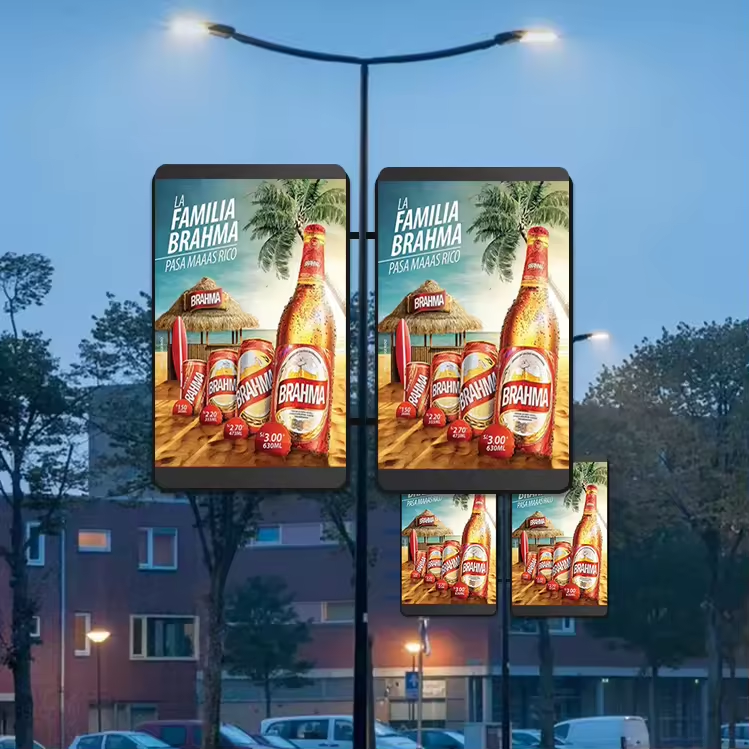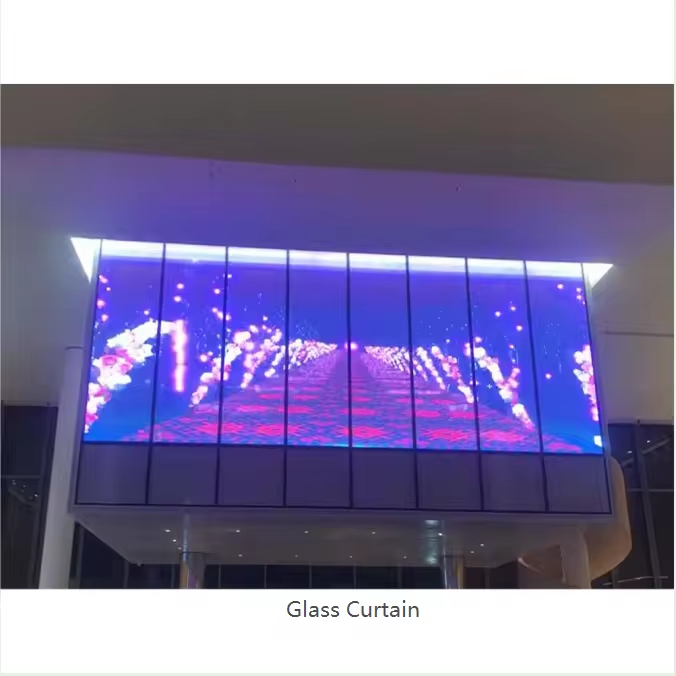A transparent LED display is a display device that uses a combination of transparent LED lamp beads and transparent display modules. It is characterized by high transparency, which can make the objects behind it clearly visible and present full and delicate colors. So what are the categories of transparent LED screens?

Transparent LED displays can be divided into the following categories:
1. Conventional indoor transparent LED display
It is suitable for indoor environments with a light transmittance of more than 80%. It is often used for advertising displays and Product Showcase in shopping malls, product showcases, exhibition halls, museums and other places.

2. Conventional outdoor transparent LED display
It is suitable for outdoor environments, with a light transmittance of more than 70% and good waterproof performance. It is often used for advertising displays, information navigation, etc. in commercial streets, squares, stadiums, glass curtain walls and other place

3. Stage transparent LED screen
It is suitable for indoor and outdoor stage performances, concerts, party celebrations and other event performance scenes. It not only reduces the load-bearing burden on the stage, but also brings endless imagination space to the audience. At the same time, it has the advantages of high refresh rate, high stability, and waterproofing. It can present multi-layered and three-dimensional stage visual effects by matching a variety of lighting, sound, video, and various stage equipment and mechanical devices.

4.Transparent Adhesive LED screen
The Transparent Adhesive LED screen uses lamp beads integrated with a lamp driver, mounted on an ultra-thin PCB board with a certain hollow, and is protected by transparent film and PC on the front and rear. This type of product is more commonly used in atrium fences, In scenes such as large brand chains and glass curtain walls. The main advantage is that the installation is very convenient, the product has been upgraded to be lightweight, the load-bearing capacity of the glass is almost negligible, and this type of product has higher permeability. The main shortcomings are that the viewing angles are difficult to unify, and the technology is relatively unstable. If the brightness is high, color casts are prone to occur. Currently, there are no relatively stable brand lamp beads on the market, and the space to choose is small.

5.Outdoor Grille LED screen
Outdoor LED grille screen is a product that puts a single DIP light bar into an aluminum profile and fills the rear light surface with glue. There are two forms of direct-plug lamp beads and surface-mounted lamp beads. This product is generally used for outdoor applications. For some large-pitch products, the pixel pitch is basically above 16mm, and they are mainly used in outdoor building advertising and lighting projects. The main advantage is that it uses conventional components, has strong stability, can realize high-voltage transmission, and is more convenient to customize. The main disadvantages are that if the span is large, it is difficult to ensure its smoothness, it will be bulky after being filled with glue, and the input lines at the control end will be messy.
6.Positive transparent LED screen
The LED transparent screen of the Positive Luminous Series uses conventional SMD lamp beads attached to a hollow PCB board, and the driver IC is deployed centrally. This type of product is produced with conventional components and conventional processes. therefore. Many LED transparent screen manufacturers produce such products. It is mainly used in glass showcases, stage performances, large chains, bars and other scenes. The main advantage lies in the simple production process, the use of relatively conventional components, good product stability, and no dark lines between the light strips. The disadvantage is that the hollowed-out parts are relatively limited, and the locations where ICs are concentrated are prone to color casts, and the cutting is inflexible. It will be more troublesome if customization is required.

7. Side-emitting transparent LED screen
The side-emitting series of LED transparent screens use the SMT process to mount the side-emitting lamp beads on the PCB light strip. This type of product is only an application form of side-emitting lamp beads. The SMT process is more difficult than the front-emitting series SMD. . Therefore, many manufacturers also produce such products, and they are more often used in the customization of glass curtain walls and some special-shaped products.

Advantage
1. Advantages of fully transparent LED screen:
– High transparency: Provides light transmittance of up to 70% to 90%, allowing viewers to see through the scenery behind the screen.
– Thin, light and flexible: The screen is thin and light, and can be bent and folded as needed to adapt to various irregular-shaped devices.
– Good display effect: full color, high brightness, good picture and video display effect.
2. Advantages of translucent LED screen:
– High visibility: usually has a light transmittance of 40% to 60%, which can show the background scenery to a certain extent while displaying the content.
– High brightness: It has high brightness and can be clearly seen in outdoor environments.
– Easy maintenance: Modular design makes replacement and maintenance easy.
3. Advantages of high transparency LED screen:
– Extremely high light transmittance: The light transmittance reaches more than 90%, with almost no visual obstruction, and the background scenery is still clearly visible.
– Ultra-thin design: The thickness is usually only a few millimeters, which requires less space during installation and saves installation costs.

The following points should be considered when choosing a suitable LED transparent display:
1. Light transmittance: Choose a transparent display with high light transmittance according to the specific usage scenario to ensure that objects behind it are clearly visible.
2. Brightness: Choose a transparent display screen with appropriate brightness according to the lighting conditions of the indoor or outdoor environment to ensure that the display effect is clearly visible.
3. Size and resolution: Choose a transparent display screen of appropriate size and resolution according to actual needs to meet the needs of display content.
4. Installation method: Choose the appropriate installation method according to the actual situation, such as hanging, sticking to the window, embedding in the wall, etc., to ensure the matching of the transparent display screen with the environment.
5. Quality and reliability: Choose a transparent display with good quality and reliability to improve the stability and service life of the display effect.
To sum up, when choosing a suitable LED transparent display, you need to consider factors such as light transmittance, brightness, size and resolution, installation method, quality and reliability to meet the needs of specific usage scenarios.































































